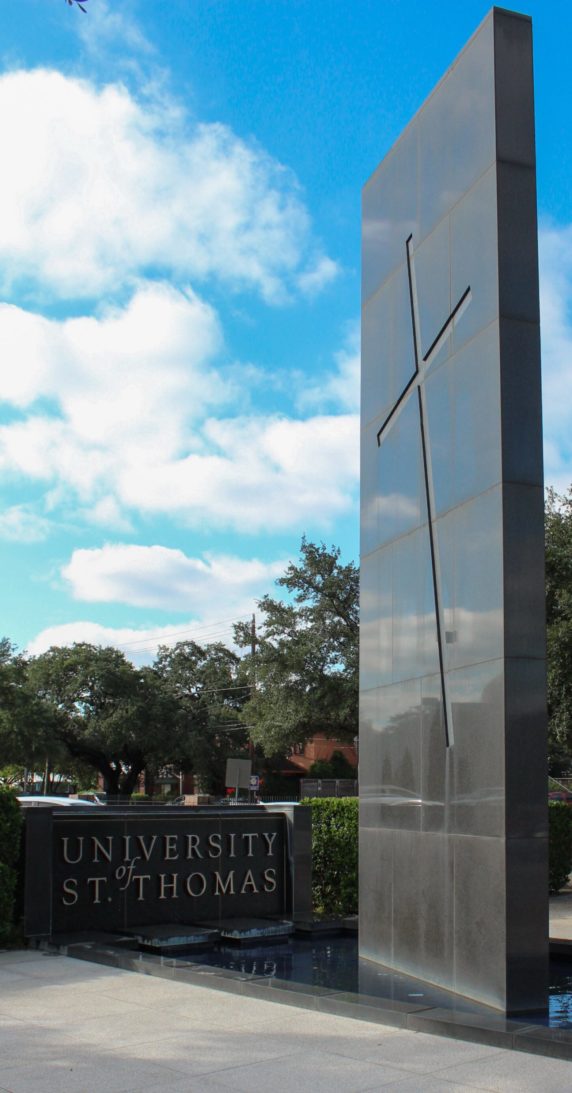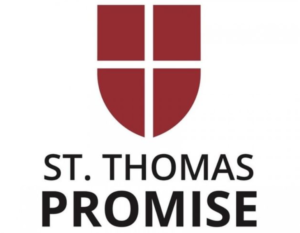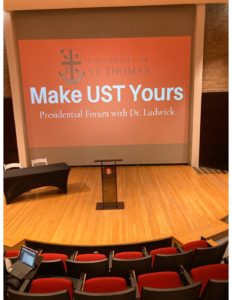December 5. That’s the date the University of St. Thomas’s Board of Directors will make its final decisions about how to fundamentally restructure the University.
So, who are the people who are making those decisions for UST, and how does it operate?
The Board makes decisions based on the best interest of the students, according to the UST Board of Directors Chair Curtis W. Huff.
“Our obligation is to have this institution be here a hundred years from now,” he said. Occasionally, however, the Board faces tough decisions. Recently, it tackled the University’s massive budget deficit, resulting in at least 30 faculty lay-offs, which proved unpopular amongst some students.
Huff, who has served on the Board seven years, said the duties of the Board involve a collaborative effort. He said he continually communicates with UST President Richard Ludwick, who informs Huff of the goings-on around campus and offers advice.
That effort also involves collaboration between the scientists, lawyers, priests, business people and alumni who also make up the Board.
Huff said he is happy with the Board, which represents many different careers and schools of thought, but said he would like to see more ethnic diversity in its composition.
“Let’s say you have a Board of 30 people that all look like me,” Huff said. “That’s not the right answer [when picking members].”
To offset the potential of “30 identical Huffs” on the Board, Huff said the nominating committee vets potential candidates and then proposes them to the Board to be voted on. Candidates are recommended by past or current Board members, the Superior of UST’s Basilian Fathers and from “friends of UST,” according to Huff.
Huff said Board members do not have to be Catholic, although he considers it important.
Another quality Board members must have is the ability to make decisions in 3-hour-long Board meetings.
In addition to separate special committee meetings, the Board typically holds meetings five times a year.
Each meeting begins with updates from Ludwick, who speaks about University-related issues that need to be brought to the Board’s attention, Huff said. Next, the Board discusses the University’s major issues and events, such as the restructure and financial concerns.
Afterward, he said, it focuses on UST operations, including marketing tools and student affairs.
Finally, the Board explores key topics it needs to assess, such as growing the University’s graduate programs or making changes to student housing.
When it’s time to vote on these changes, Huff said that everyone’s votes count the same–no one in particular has the final say, but the vote must typically reach a majority.
Other instances, such as nominating a president, call for a supermajority or two-thirds vote.
“Typically votes are unanimous,” Huff said. “Everything we’re doing right now with the restructuring has either been unanimous, or one or two abstain; we haven’t had anybody vote against.”
Huff said he tries to keep Board members educated about what they’ll be voting on.
For example, Huff said throughout the restructure process, the Board held numerous “learning sessions” with UST’s Vice President of Academic Affairs Chris Evans to help Board members understand the academic component of the restructure.
Huff said this process ensures that Board members understand what they are being asked to approve.
“Decisions usually don’t just happen,” Huff said. “The process is that Board members are aware of what’s going on…people who have issues [with what’s going on] have an opportunity to raise those issues. So by the time that you are taking action, there should be a consensus there.”
Huff said the Board also remains informed and receives general student input by having UST Student Body President Nadin Fallah, Faculty Senate Chair Hans Stockton and Alumni Board President Aaron Stryk ‘01 attend Board meetings.
“Ultimately, the reason we exist is for the students,” Huff said, “and therefore we need to understand what the issues are for the students. Are we offering them the right type of experience?”
That question lead Huff to approach newly elected Ludwick in 2017 about a new vision for the University. In response, Ludwick created and implemented his Call Toward Tomorrow business plan and strategy.
“When Dr. Ivany retired, it gave us an opportunity to look at the world we’re in, and use it as an opportunity to reinvigorate,” Huff said.
Huff acknowledges that change can be uncomfortable for people.
His response? The famous line from Robert Frost’s poem “The Road Not Taken:” “Two roads diverged in a wood and I–I took the one less traveled.”
It leads to opportunities, he said.






Be First to Comment